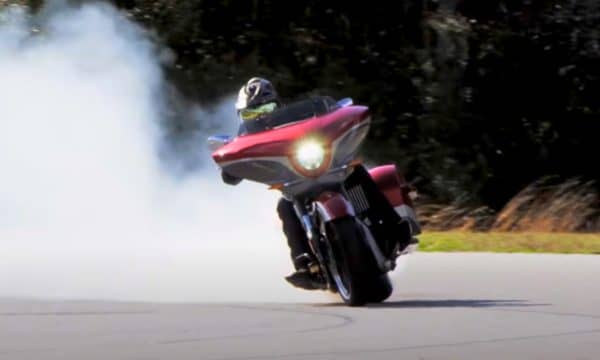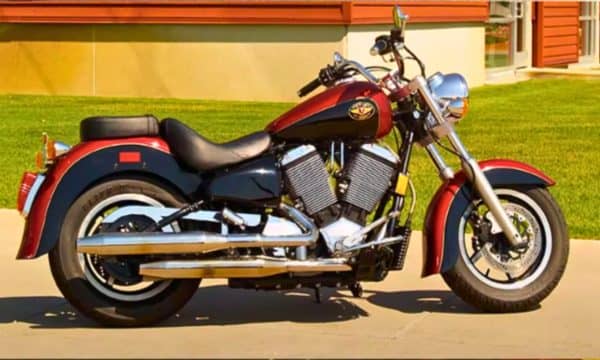Victory Motorcycles, established in 1998 by Polaris Industries, emerged as a new player in the heavy cruiser and touring motorcycle market, aiming to compete directly with Harley-Davidson and other established brands.

With innovative designs and a focus on performance, Victory quickly garnered attention and a dedicated customer base.
In 2017, Polaris announced the discontinuation of Victory Motorcycles, deciding to concentrate their efforts on the Indian Motorcycle brand, which they had acquired in 2011.
But the question here is whether these motorcycles are reliable and worth buying even after the discontinuation.
The answer is Yes, Victory Motorcycles are generally considered reliable. They are known for their robust engine design, durable build, and quality manufacturing processes that contribute to their longevity.
Most owners report satisfaction with the reliability of their bikes, noting fewer mechanical failures compared to other brands.
However, as with any vehicle, maintenance is key to reliability and properly serviced Victory motorcycles often see extended lifespans without major issues.
So let’s discuss the points that affect the reliability and compare Victory with their competitors.
What is Motorcycle Reliability?
Motorcycle reliability hinges on several key factors, including the quality of manufacturing, the robustness of the engine design, consistency in the quality of parts, and the availability of maintenance services.
High-quality materials and meticulous assembly processes contribute significantly to the durability and reliability of motorcycles.
Furthermore, the design of the engine plays an important role; engines that are built to endure less wear and tear over time tend to be more reliable.
Regular maintenance and prompt repairs are also vital to prolonging the lifespan of the motorcycle and ensuring its reliability.
Victory Motorcycles Reliability: User Experiences
Victory Motorcycle fans rave about how tough and reliable their bikes are. Even the older models from the 2000s keep roaring down the road, with some bikers clocking in over 100,000 miles without a hitch.
They swear by regular check-ups, changing the oil, swapping out tyres, and sometimes the drive belt to keep their rides smooth.

Sure, a hiccup here and there might happen, but it’s pretty rare. The one hiccup is finding a dealer when you’re on a long ride, but savvy bikers use their GPS to track one down before hitting the road.
Despite this small bump, riders can’t get enough of their Victory bikes, loving the mix of comfort, zip, and trustworthiness.
From 1997 to 2017, Victory Motorcycles carved a niche with its stylish cruisers, distinguishing itself with performance and design.
In 2007, models like the Vegas Jackpot and Hammer turned heads with their potent engines and daring looks, offering a fresh take on the classic American cruiser.
The victory broke moulds again in 2008 with the Vision, a touring bike ahead of its time, showcasing the brand’s flair for innovation.
The Octane, introduced later, skillfully merged modern trends with traditional charm, underscoring Victory’s ability to appeal to diverse preferences.
But there are a few drawbacks with these bikes in 2006, Victory Motorcycles swiftly addressed a recall centered around a failing fuel pump retainer clip, a critical component that, if malfunctioned, could lead to engine stalling or even crashes.
Victory not only identified the issue but also provided a seamless solution: a free installation of a new clip by authorized dealers, taking only about 75 minutes.
Motorcycle owners were advised to halt riding until the fix was applied, underscoring Victory’s dedication to safety above all.
Role of Maintenance in Reliability
Ensuring your Victory Motorcycle runs smoothly for years hinges on routine maintenance.
Stick to the recommended upkeep schedule, whether your bike is brand-new or pre-loved.
This plan should include everything from initial efficiency checks and major repairs to regular inspections and adjustments based on how you ride.
Tackling issues early keeps minor hiccups from turning into costly headaches. Simple practices like changing oil, replacing filters, and checking brakes not only prolong your bike’s life but also boost its performance and safety.
Performance and Ride Quality
Victory Motorcycles, especially the Cross Roads, boast stellar performance, smooth handling, and unmatched ride comfort.
The heart of this beast, the 106 Freedom V-twin engine, churns out a hefty 109 ft-lb of torque, making for exhilarating acceleration and seamless highway cruising.
Its handling impresses with a low center of gravity and extended wheelbase ensuring stability, whether you’re zipping around corners or cruising at speed.
The gearbox, though hefty, offers precise shifts, complemented by a handy “Neutral Assist” for slipping into neutral effortlessly.
Meanwhile, the suspension system excels in smoothing out rough patches, ensuring you ride in comfort without the jolt, complemented by a seat designed to keep lower back woes at bay.
For anyone eyeing a mix of performance and comfort for either short dashes or extended adventures, the Cross Roads, with generous storage, a comfy seat height, and an optional windshield, sets a high bar.
Victory Motorcycles vs. Competitors
Victory Motorcycles, known for outperforming Harley-Davidson and European giants like BMW in reliability, have made a mark with their seamless handling and robust engines, delivering exhilarating rides.

Despite halting production in 2017, the legacy thrives. Polaris, Victory’s parent company, reassures riders with a pledge to supply parts until at least 2027.
Furthermore, a vibrant aftermarket community ensures these machines keep roaring on the roads by offering an array of compatible parts and accessories.
This dual support system from Polaris and third-party vendors quashes any worry about owning a bike from a discontinued line, empowering Victory enthusiasts to relish their rides, sure of their bike’s dependability and performance.
The Verdict: Are Victory Motorcycles a Reliable Choice?
Yes, Victory motorcycles are reliable due to their build quality, comfort and more due to their promise of providing parts till 2027 even after the discontinuation of the company in 2017.
They were launched in 1998 and bowing out in 2017, Victory motorcycles carved a niche for themselves with their blend of reliability, sleek handling, and potent engines.
A testament to their build, a 2015 study showcased their stellar consumer satisfaction levels and minimal issues, beating numerous rivals hands down.
Impressively, some Victory bikes have clocked over 300,000 miles, still running strong with due care.
While their discontinuation raises eyebrows about parts and service, Polaris hasn’t left riders in the lurch, continuing to provide the necessary support.
Furthermore, the aftermarket has stepped up, offering compatible parts, ensuring that Victory owners aren’t stranded.
With their fewer problems and higher contentment scores, especially against giants like Harley-Davidson, Victory motorcycles stand out for those who prioritize unwavering performance and reliability over the availability of parts and ongoing production.

Ahtsham Younas is a passionate blogger and content writer. He loves to ride motorcycles and learn the mechanical process behind the motorcycles.
He has been writing articles in the motorcycle industry since 2019 and has learned many things about motorbike niches.


